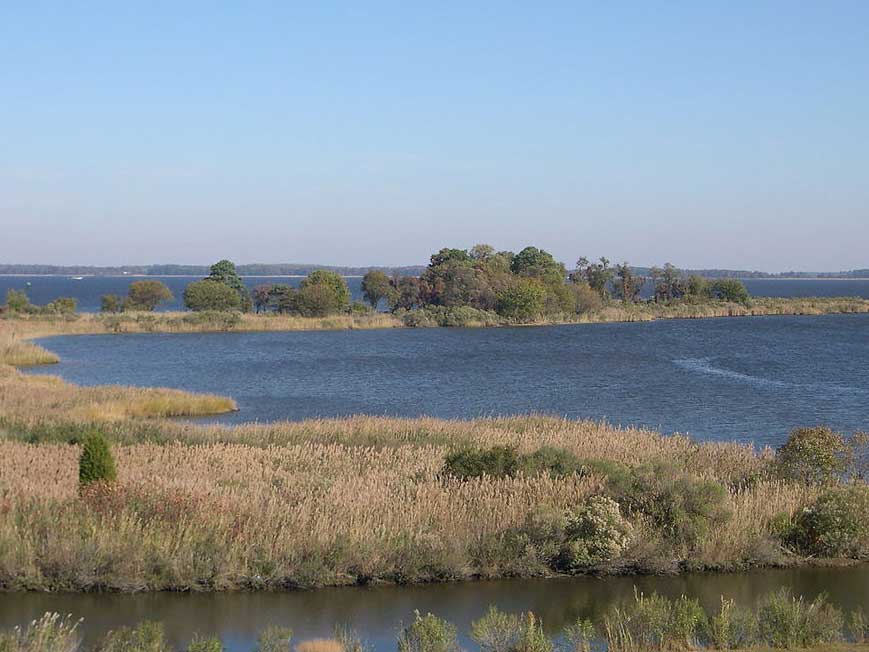Maryland

Pocohontas
Charles I granted a charter for the Maryland colony to the Cecil Calvert, the second Lord for Baltimore. The charter had originally been granted to his father. However, since Calvert’s father died before the charter could be used, it was granted to his son instead. Lord Baltimore wanted to provide a colony for English Catholics. He also wanted to prove that Catholics and Protestants could live together. King Charles was eager to have the area settled to provide a buffer against the Dutch that were claiming the Chesapeake Bay area.
The 200 people who traveled aboard the “Ark and Dove” landed at St. Clements Island, on March 25, 1634. Lord Baltimore offered attractive land grants, so as to entice settlers. Although Baltimore was hoping to found a largely Catholic colony, the majority of the settlers were Protestants. The first settlers purchased land from the Yaocomico (local Native American tribe) and founded St. Mary’s City. The first governor of the colony was Leonard Calvert, younger brother of Lord Baltimore. The charter of the colony gave exclusive power to the governor.
In 1649 the local assembly passed “The Maryland Toleration Act”, which was also known as “The Act Concerning Religion”. The bill was passed to guarantee religious freedom in the colony. However, that religious freedom was limited– only applying to Christians. In 1689 Puritans who lived in Maryland revolted against the proprietary government. The Puritans claimed the government unfairly favored Catholics. They defeated the government army and they outlawed Catholicism. The government the Puritans set up was not popular and a Royal government replaced it. The Calvert family managed to reassert their rule for a period of time.
The colonial government of Maryland remained in St. Mary’s City until 1708, when it was moved to Providence. Providence was later renamed Annapolis.
The original charters for Maryland and Pennsylvania physically overlapped. This created a border dispute between the two colonies. To overcome the dispute the colonies commissioned two surveyors, Charles and Jeremiah Dixon, to map the boundary. That boundary became known as “The Mason-Dixon Line”.
 >
>